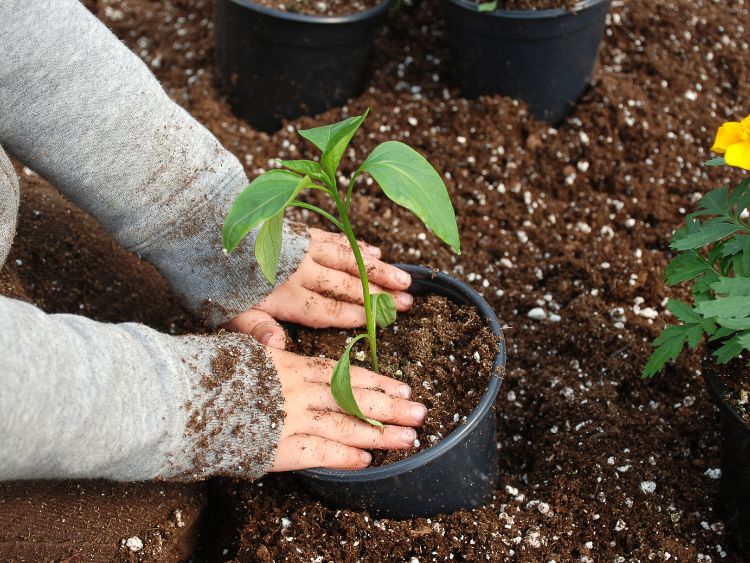Gardening by the moon isn’t a new fad—it’s an ancient practice that’s as old as agriculture itself. But, with a modern twist, it’s making a comeback among gardeners seeking to harness the lunar cycle’s influence on plant growth. This comprehensive guide dives deep into the moon’s phases, how they affect your garden, and ways to optimize planting, pruning, and harvesting for the best results. Let’s dig in and discover how to align your gardening activities with the lunar calendar for a bountiful harvest.
Ever wondered why your grandparents insisted on planting certain seeds on specific days? Or why they believed some days were better for pruning than others? The answer might lie in the lunar gardening calendar, a concept that might sound mystical but has roots in both folklore and science. Gardening by the moon is more than just an old wives’ tale; it’s a practice that can significantly influence the success of your garden. So, let’s roll up our sleeves and explore how you can use the moon’s phases to boost your garden’s productivity and health.
Understanding the Lunar Cycle
The lunar cycle, approximately 29.5 days long, is divided into four primary phases: new moon, first quarter, full moon, and last quarter. Each phase brings different conditions that can affect plant growth. Here’s a brief overview:
- New Moon: A time for new beginnings, it’s ideal for planting seeds that require good root development.
- First Quarter: As the moon grows, so does its gravitational pull, encouraging leaf growth. It’s perfect for leafy vegetables.
- Full Moon: With the moon at its brightest, root growth slows, and energy shifts above ground. This phase is great for flowering and fruiting plants.
- Last Quarter: As the moon wanes, it’s a time for pruning, transplanting, and fertilizing, preparing the garden for the next cycle.
The Magic Behind the Moon’s Influence
Gravitational Pull and Plant Growth
The moon’s gravitational pull impacts the tides, and similarly, it’s believed to affect the moisture in the soil, making it more available to plants during certain phases. This concept suggests that seeds absorb more water during the full moon and new moon, potentially enhancing germination and growth.
Lunar Light and Plant Development
Lunar light, or the lack thereof, plays a role in how plants behave. During the brighter phases of the moon, plant growth can be stimulated, leading to healthier, more vigorous plants, especially when it comes to flowering and fruit production.
How to Garden by the Moon
Gardening according to the lunar phases involves a bit of planning and observation. Here’s how you can get started:
- Track the Lunar Calendar: First things first, keep a lunar calendar handy. Note the phases and plan your gardening activities accordingly.
- New Moon Planting: Focus on planting seeds that benefit from strong root growth. Think root vegetables and plants that produce their seeds inside the fruit.
- First Quarter to Full Moon: This is your window for leafy greens and annuals that complete their life cycle in one year.
- Full Moon to Last Quarter: Time to plant perennials, biennials, and bulbs. Also, consider harvesting herbs for the best flavor.
- Last Quarter: No planting during this phase. Instead, focus on maintenance tasks like weeding, pruning, and composting.
FAQs
Q: Does gardening by the moon really work? A: While scientific evidence is mixed, many gardeners swear by lunar gardening, noting significant improvements in their plant growth and yield.
Q: Can I apply lunar gardening principles to indoor plants? A: Absolutely! The moon’s phases can influence indoor plants just as they do outdoor gardens, so feel free to experiment.
Q: What if I plant on the “wrong” day? A: Gardening by the moon is a guideline, not a strict rule. Plants are resilient, and while lunar gardening can optimize growth, planting on a non-ideal day won’t doom your garden.
Summary
Gardening by the moon is a blend of ancient wisdom and gardening science, offering a unique approach to planting, growing, and harvesting. By aligning gardening activities with the lunar phases, gardeners can potentially enhance the health and yield of their plants. Remember, the moon’s influence on your garden is just one of many factors that contribute to its success. Soil health, watering, and pest management play equally crucial roles. So, whether you’re a moon gardening skeptic or a curious green thumb, why not give it a try? You might just be surprised by the results.
Happy lunar gardening!

